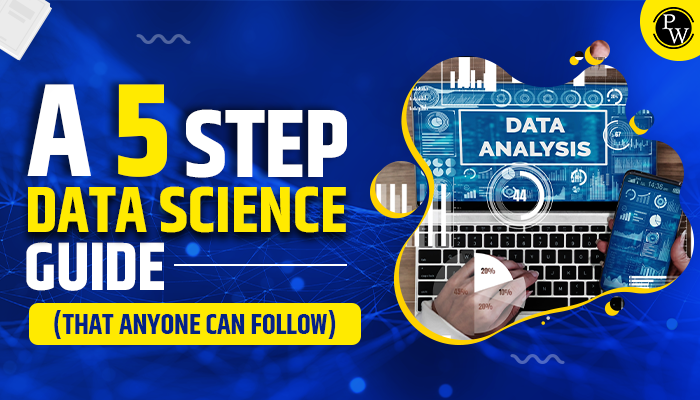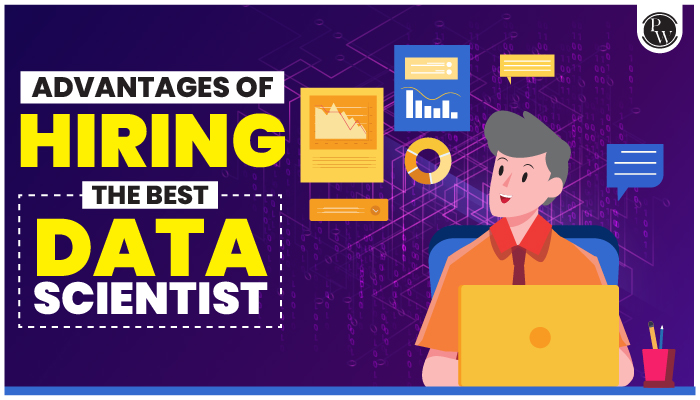Deep Learning Interview Questions: In this blog post, we will present the top 30 deep-learning interview questions carefully selected for data scientists. Whether you are preparing for a job interview, looking to expand your knowledge, or simply curious about the complexities of deep learning, this post guide will provide you with the insights and answers you need to navigate the challenges of the interview room.

From fundamental concepts to advanced techniques, we will investigate neural networks, optimization algorithms, regularisation methods, and practical deep learning applications in various domains. Each question is a stepping stone, guiding you through the multifaceted landscape of deep learning and allowing you to explain your knowledge and demonstrate your expertise in this dynamic and rapidly evolving field.
Learn Data Science With PW Skills: Generative AI and Machine Learning
Join our Data Science with ML course to learn all the latest tools and technologies related to data science, along with machine learning concepts. Our course completely covers the requirements of a Data Scientist job role and converts the learner into a job-ready enthusiast.
After completing the course, you will have your own Data Science projects, skillsets related to data science, concepts and knowledge, and completion certificates. Additionally, we will also provide you with 100% placement support and many more. Hurry and visit our website to learn more.
You can also join our Generative AI Course and many other trending courses only on our website @pwskills.com.
Deep Learning Interview Questions for Data Scientists for Beginners
Q1. What is Deep Learning?
Ans. Deep learning is a subfield of machine learning that studies the creation and application of artificial neural networks to model and solve complex problems.
It is modelled after the structure and function of the human brain, particularly how it processes information via interconnected nodes (neurons). Deep learning algorithms employ multiple layers of interconnected nodes to form what is known as a neural network.
Q2. What is an artificial neural network?
Ans. An artificial neural network is inspired by the networks and functionalities of human biological neurons, also known as neural networks.
An artificial neural network (ANN) is a computational model based on the structure and operation of biological neural networks, like the human brain.
It is a fundamental component of deep learning. Artificial neural networks consist of interconnected nodes, often called artificial neurons or simply neurons, organised into layers.
Q3. What is the difference between deep learning and machine learning?
Ans. Some major differences between the two advanced technologies are given here.
| Difference between Deep Learning and Machine Learning | |
| Machine Learning | Deep Learning |
| Applies statistical algorithms | Uses artificial neural network architecture |
| Can work on smaller datasets | Requires a larger volume of data compared to ML |
| Better for low-label tasks | Better for complex tasks like image processing, NLP, etc. |
| The time required to train the model is less | The time required to train the model is more |
| Manual extraction of relevant features from images | Automatic extraction of relevant features from images |
| Less complex and easier to interpret the outcome. | More complex, works like a black box, and interpretations are not easy |
| It can work on CPU, requires less computing power | It requires a high-performance computer with a GPU |
Q4. What are Epochs and Batches in Deep Learning training?
Ans. In deep learning training, the concepts of epochs and batches are related to how the model learns from the training data. Let’s break down each term:
Epochs:
- An epoch is a complete pass through the entire training dataset during the training of a neural network.
- During one epoch, the model processes the entire training dataset, computes the loss, and updates the model’s parameters (weights and biases) based on the gradients of the loss function.
- Training for multiple epochs allows the model to see the entire dataset multiple times, refining its parameters with each pass and improving its prediction ability.
Batches:
- In practice, processing the entire dataset in one go is often computationally expensive and memory-intensive, especially if the dataset is large.
- Instead, the dataset is divided into smaller batches. A batch is a subset of the training data used to update the model’s parameters.
- The model processes one batch at a time, computes the loss, and performs a parameter update based on the gradients calculated from that specific batch.
- The process is repeated for all batches in the dataset, and one pass through all batches constitutes one epoch.
Q5. What are the applications of deep learning?
Ans. Deep learning has found applications across a wide range of fields due to its ability to learn and extract complex patterns from data automatically. Some notable applications of deep learning include:
- Image and Speech Recognition
- Natural Language Processing (NLP)
- Healthcare
- Autonomous Vehicles
- Finance
- Gaming
- Drug Discovery
- Marketing and E-commerce
- Climate Science
- Robotics
Q6. What are the challenges in Deep Learning?
Ans. Some of the key challenges of deep learning are:
- Data Requirements: Deep learning models often require large amounts of labelled data for effective training. Obtaining and annotating massive datasets can be resource-intensive and challenging, especially in domains where labelled data is scarce.
- Computational Power: Training deep neural networks, especially large ones, demands significant computational power. Training deep models on complex tasks may require high-performance GPUs or even specialized hardware, making it expensive and inaccessible for some researchers or organizations.
- Interpretability and Explainability: Deep learning models are often considered “black boxes” because understanding the internal mechanisms and reasoning behind their predictions can be challenging. Interpretability and explainability are crucial, especially in applications where decisions impact human lives, such as healthcare.
- Overfitting: Deep learning models are susceptible to overfitting, where the model performs well on the training data but fails to generalise to new, unseen data. Techniques like regularisation and dropout are employed to mitigate overfitting, but finding the right balance is a challenge.
Q7. What is Supervised Learning in deep learning?
Ans. Supervised learning in deep learning is a type of machine learning in which the model is trained on a labelled dataset, which means that the input data is paired with the corresponding output labels.
The model should learn the mapping or relationship between the input data and the target output. During training, the model adjusts its parameters in response to the labelled examples provided, aiming to reduce the difference between its predictions and the actual labels. The trained model can then make predictions using new, previously unseen data.
Q8. What is Unsupervised Learning in deep learning?
Ans. In deep learning, unsupervised learning is the process of training models on unlabeled data without explicit guidance or predefined outcomes. The algorithm recognises patterns, structures, or representations in the data on its own.
Clustering, dimensionality reduction, and generative modelling are examples of common unsupervised learning tasks. This method is used when labelled training data is scarce, and the goal is to uncover hidden patterns or structures in the data.
Q9. What is Reinforcement learning in deep learning?
Ans. Reinforcement Machine learning is the process by which an agent learns to make decisions in a given environment to maximize a reward signal. The agent interacts with its surroundings by performing actions and observing the outcomes.
Deep learning can be used to discover policies or sets of actions that maximise the cumulative reward over time. Deep reinforcement learning algorithms, such as Deep Q networks and Deep Deterministic Policy Gradient (DDPG), are used to reinforce tasks like robotics and gaming.
Q10. What is the concept of overfitting in deep learning?
Ans. Overfitting happens when a model learns the training data too well, including noise and outliers. It corresponds to the underlying pattern and the random fluctuations in the training data. Such a model performs well on training data but poorly on unseen data (test data) because it memorises the training data rather than learning to generalise.
Q11. What is the concept of Underfitting in deep learning?
Ans. Underfitting occurs when a model is too simple to learn the underlying pattern in the data, resulting in poor training and testing performance. This happens when the model lacks capacity (i.e., layers or nodes) or is not adequately trained.
Q12. What is a GPU?
Ans. The GPU, or Graphics Processing Unit, in the context of deep learning, refers to a specialized hardware accelerator that significantly speeds up the training and inference processes of deep neural networks.
Deep Learning Interview Questions for Data Scientists for Intermediate Level
Q13. What is TensorFlow?
Ans. TensorFlow is an open-source machine learning framework developed by the Google Brain team. It provides a comprehensive set of tools and libraries for building and deploying machine learning models, particularly deep learning models.
TensorFlow is designed to be flexible and scalable, making it suitable for a wide range of applications. It allows users to define, train, and deploy machine learning models efficiently, and it supports both traditional machine learning and deep learning tasks.
Q14. What is PyTorch?
Ans. PyTorch is an open-source machine learning framework that is widely used for building and training deep learning models. PyTorch, developed by Facebook’s AI Research Lab (FAIR), offers a dynamic computational graph, making model development more intuitive and flexible.
It has gained popularity due to its ease of use, seamless integration with Python, and strong support for dynamic computation, making it ideal for research and experimentation.
Q15. How can deep learning be applied to NLP tasks such as machine translation and text generation?
Ans. Deep learning is critical for advancing natural language processing (NLP) tasks and providing sophisticated machine translation and text generation approaches. In both cases, deep learning’s strength stems from its ability to learn hierarchical representations and intricate patterns from massive amounts of data.
This allows the models to capture linguistic nuances, understand semantics, and produce contextually appropriate outputs.
Q16. Define the learning rate in Deep Learning.
Ans. In deep learning, the learning rate is a hyperparameter that determines how frequently the optimizer adjusts the neural network’s weights during training. It specifies the step size at which the optimiser will update the model parameters for the loss function. so that losses can be minimized during the training process.
With a high learning rate, the model may converge quickly, but it may also overshoot or bounce around the optimal solution. A low learning rate, on the other hand, may slow the model’s convergence but result in a more accurate solution.
Q17. How do you optimise a Deep Learning model?
Ans. A Deep Learning model can be optimized by adjusting its parameters and hyperparameters to improve its performance on a specific task. Here are some common methods for deep learning model optimization:
- Choosing the right architecture
- Adjusting the learning rate
- Regularisation
- Data augmentation
- Transfer learning
- Hyperparameter tuning
Q18. What is Batch Gradient Descent?
Ans. Batch Gradient Descent calculates the gradient of the entire dataset at once and updates the model parameters in a direction that minimises the cost function. It calculates the average gradient over the entire dataset.
The model parameters are updated with this average gradient.
Batch Gradient Descent differs from other variants such as Stochastic Gradient Descent (SGD) and Mini-Batch Gradient Descent, which use subsets of the data for gradient updates.
Q19. What is a stochastic gradient descent?
Ans. SGD updates the model parameters by computing the gradient of the cost function in relation to the parameters for each training example and updating the parameters one at a time. It randomly chooses one training example from the dataset. Calculate the gradient for that particular example. Updates the model parameters using the gradient.
SGD is frequently used in scenarios where the dataset is large and the computational cost of processing it all in one iteration is prohibitively expensive.
Q20. What is Mini-Batch Gradient Descent?
Ans. Mini-batch gradient descent uses a small batch of training examples to compute the gradient and update the parameters at each iteration. This can be a good compromise between batch gradient descent and stochastic gradient descent because it is faster and less noisy.
Q21. What are the different types of neural networks?
Ans. There are different types of neural networks used in deep learning. Some of the most important neural network architectures are as follows;
- Feedforward Neural Networks (FFNNs)
- Convolutional Neural Networks (CNNs)
- Recurrent Neural Networks (RNNs)
- Long Short-Term Memory Networks (LSTMs)
- Gated Recurrent Units (GRU)
- Autoencoder Neural Networks
- Attention Mechanism
- Generative Adversarial Networks (GANs)
- Transformers
- Deep Belief Networks (DBNs)
Q22. What is a Deep Learning framework?
Ans. A deep learning framework is a collection of software libraries and tools that help programmers develop and train deep learning models more efficiently. It provides a high-level interface for building and training deep neural networks, as well as lower-level abstractions for implementing specific functions and topologies. TensorFlow, PyTorch, Keras, Caffe, and MXNet are a few popular deep-learning frameworks.
Q23. What is Gradient Clipping?
Ans. Gradient clipping is a technique used to avoid the exploding gradient problem when training deep neural networks. It entails rescaling the gradient whenever its norm exceeds a certain threshold. The idea is to clip the gradient, which means setting a maximum value for the gradient’s norm so that it does not grow too large during the training process.
This technique ensures that the gradients don’t become too large and prevents the model from diverging. Gradient clipping is a common technique in recurrent neural networks (RNNs) to avoid the exploding gradient problem.
Deep Learning Interview Questions for Data Scientists for Experienced
Q24. What do you understand about batch normalization in deep learning?
Ans. Batch Normalization (BatchNorm) is a deep learning technique that normalizes the input of each layer in a mini-batch to reduce internal covariate shifts. BatchNorm normalizes activations by subtracting the mean and dividing by the batch’s standard deviation. It is typically applied to each layer’s input in a neural network to help stabilize and speed up the training process.
The advantages of Batch Normalization are:
- It minimises vanishing or exploding gradient problems.
- It reduces sensitivity to initialization choices.
- Acts as a type of regularisation, potentially reducing the need for dropout.
Q25. What do you understand about momentum optimisations?
Ans. Momentum optimization is a variation of gradient descent algorithms that are often used in conjunction with other optimization techniques to improve deep neural network training. It introduces a momentum term, which represents a moving average of previous gradients. The momentum term influences the direction and magnitude of the update.
Momentum optimizations have the advantage of accelerating convergence, particularly in directions with consistent gradients, as well as damping oscillations and overshooting in the optimization process.
Q26. What is fine-tuning in deep learning?
Ans. Fine-tuning is a technique for deep learning. In which a pre-trained neural network is modified to fit a new task by adjusting its weights through additional training on a dataset similar to the one used in the final application.
This can be accomplished by either replacing the pre-trained model’s output layer with a new layer that is appropriate for our problem or by freezing some of the pre-trained model’s layers and training the remaining layers on the new task or dataset. The goal is to adjust the pre-trained network’s weights through additional training to adapt to the new dataset and task.
Q27. What do you mean by dropout in deep learning?
Ans. Dropout is a commonly used technique that has been shown to improve the performance of deep neural networks, particularly in tasks with limited training data. It introduces redundancy, which prevents neurons from co-adapting.
Throughout training, no single neuron can rely on the presence of specific other neurons. It simulates the effect of training various neural network architectures at each stage, lowering the risk of overfitting.
Q28. What are Convolutional Neural Networks (CNNs)?
Ans. Convolutional neural networks (CNNs) are a type of deep neural network architecture used for tasks that require grid-like data, such as images and video. Convolutional neural networks have become the foundation of computer vision and image processing, and their success has spread to other domains, demonstrating their effectiveness in feature extraction and pattern recognition tasks.
CNNs automatically learn feature hierarchies from raw input data. Early layers detect basic features such as edges, whereas deeper layers capture complex patterns and high-level representations.
Q29. What exactly do you mean by convolution?
Ans. Convolution is a mathematical operation used in a variety of fields, including image preprocessing, audio, and signal processing, to extract useful features from input data using various filters (also known as kernels).
Convolution is useful because it allows CNN to extract local features while preserving the spatial relationships between features in the input data. This is especially useful in image processing, where the placement of features within an image is frequently as important as the features themselves.
Q30. What is Stride.
Ans. In convolutional neural networks (CNNs) and signal processing, a stride refers to the step size or interval at which the convolutional filter (also known as a kernel or window) moves across input data.
Recommended Technical Course
- Full Stack Development Course
- Generative AI Course
- DSA C++ Course
- Java+DSA 1.0 Course
- Data Analytics Course
- Data Science with ML 1.0 Course
For Latest Tech Related Information, Join Our Official Free Telegram Group : PW Skills Telegram Group




